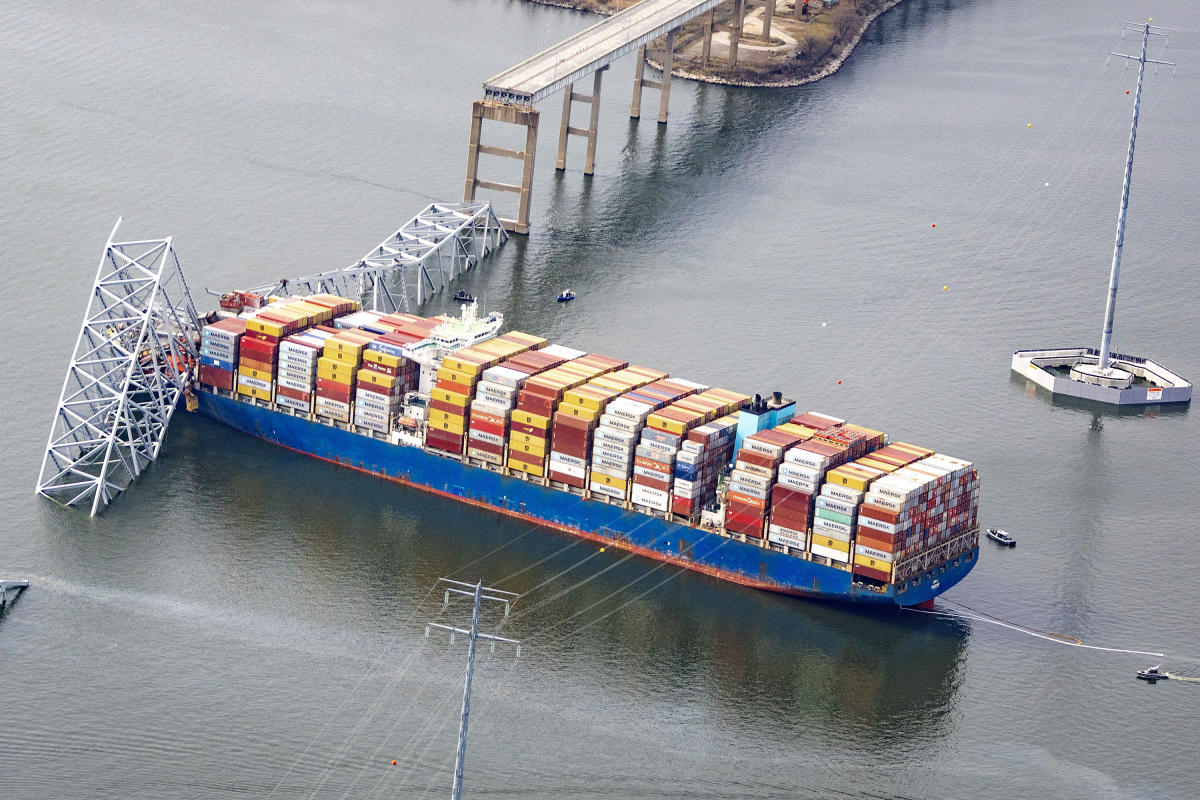The cargo vessel that collided with the bridge, the Dali, was carrying 56 containers of hazardous materials, including lithium batteries, and had more than 1 million gallons of fuel onboard when it lost power early in the morning of March 26 and hit a support column, toppling the bridge.
The samples, taken between 1:55 p.m. and 3:42 p.m. March 26 by the Maryland Department of the Environment, were analyzed by Maryland Spectral Services, a laboratory in Baltimore County, between March 27 and April 1.
Maryland Department of the Environment spokesperson Jay Apperson said Wednesday that the samples were taken upriver and downstream of the crash site, and that these are the first results.
“There was no detection of any of those contaminants,” Apperson said. “These results will be used as a baseline for comparison with water quality testing results throughout response, recovery and reconstruction. Sampling will continue indefinitely every few days as needed.”
Serena McIlwain, Maryland’s environment secretary, said Tuesday that all 56 containers with hazardous materials “have been accounted for” and 14 were “crushed.”
National Transportation Safety Board Chair Jennifer Homendy said last week that a review of the Dali’s ship manifest revealed that 56 containers onboard at the time held 764 tons of “mostly corrosives, flammable, and miscellaneous hazardous materials,” including lithium-ion batteries.
Maryland Department of the Environment Deputy Secretary Suzanne Dorsey said at a news conference Wednesday that the state is still unsure how many of the 4,700 containers fell off the ship.
“We are not aware of exactly how many containers are in the water, but we continue to sample to ensure the safety and the health of the Patapsco River,” Dorsey said.
Rain, wind and thunder continued to hinder cleanup operations around the bridge Wednesday.
Coast Guard Rear Adm. Shannon Gilreath said crews are prepared to use cranes to remove undamaged shipping containers off the ship.
“We are staged to begin lifting the first of those undamaged containers off the bow of the ship. We need to lift those undamaged containers off to give us space to safely operate to begin to plan to remove portions of the bridge that are also embedded into the ship,” Gilreath said. “We’re staged and ready to go. We just need a break in the weather to be able to start those operations.”
Gilreath also said bad weather has delayed the removal of a 350-ton chunk of the Key Bridge.
“We are again waiting for another weather window to be able to do that 350-ton lift,” Gilreath said. “Those are friction-break cranes, and it’s just not safe with this rain to operate in those conditions.”
Gilreath added that eight vessels, all barges and tugboats, have passed through temporary channels on the northeast and southwest side of the crash site that are 11 and 14 feet deep. The center channel where the Dali remains is 50 feet deep.
Maryland Transportation Secretary Paul Wiedefeld said his agency has entered its first emergency contract under an allocation of $60 million in federal relief funds for initial work to clear one of the alternative passageways.
Wiedefeld said his department was having “several meetings a day” with the Federal Highway Administration to consider the state transportation department’s next request for emergency funding. After that will be a large request, the money to build a new bridge.
_____
(Baltimore Sun reporter Dan Belson contributed to this article.)
_____
